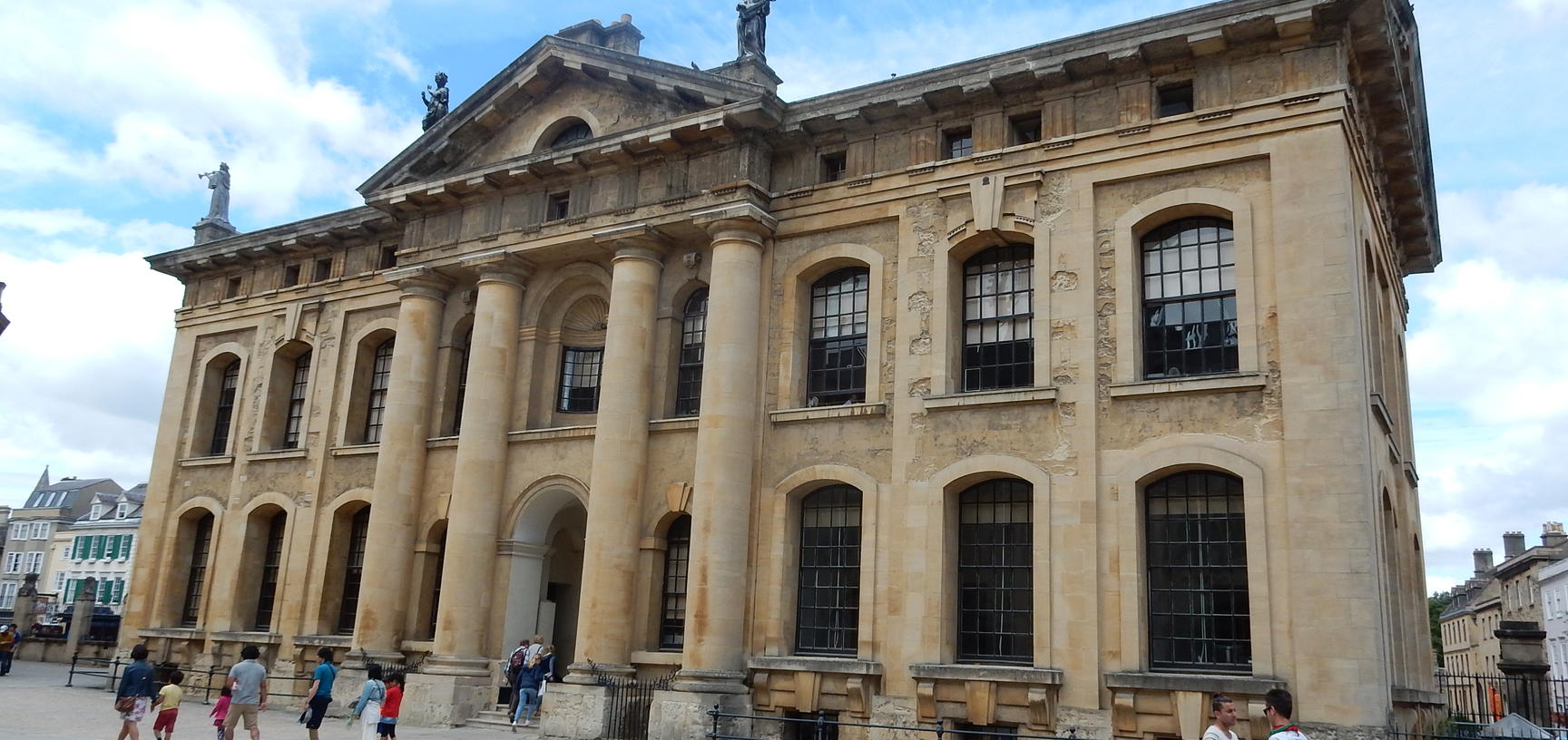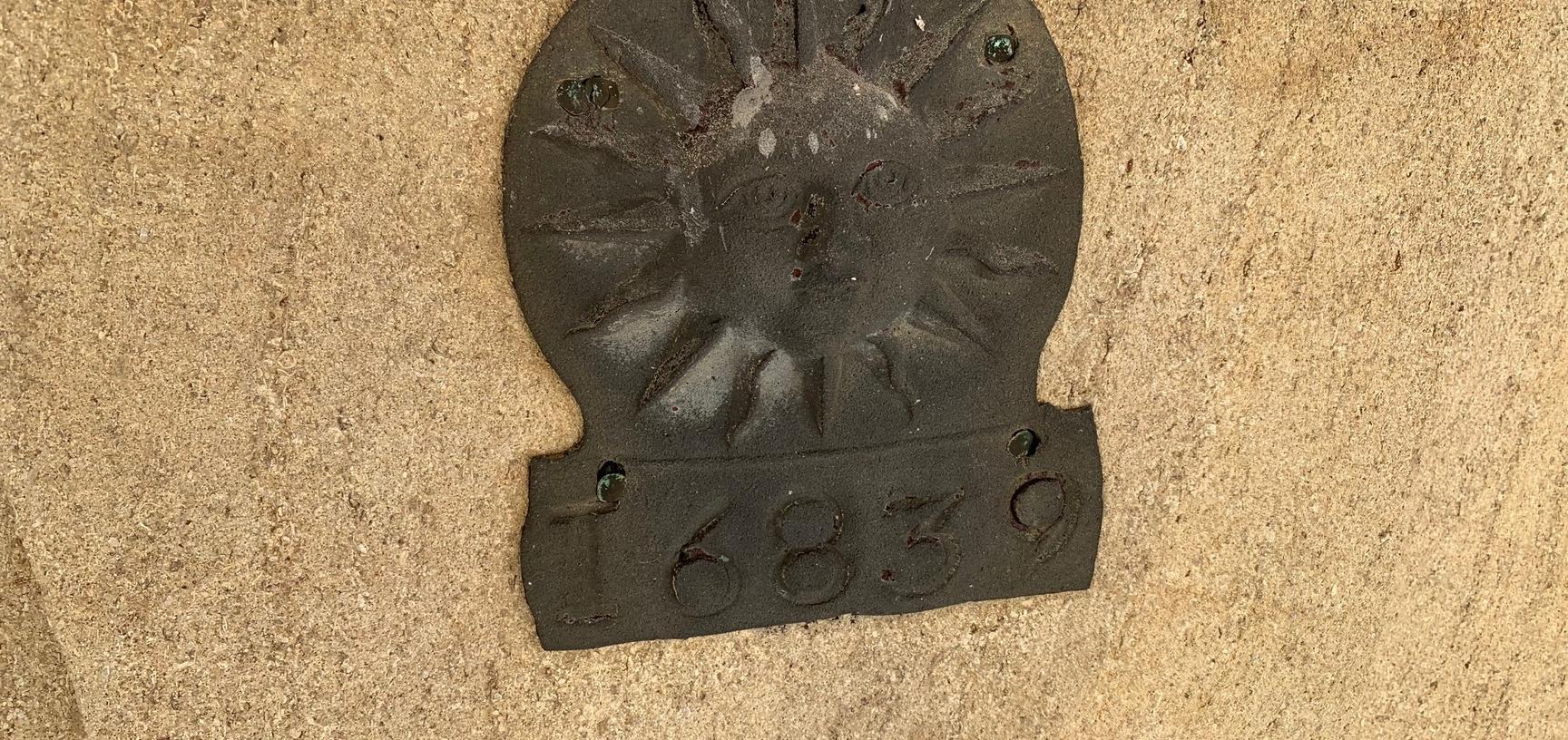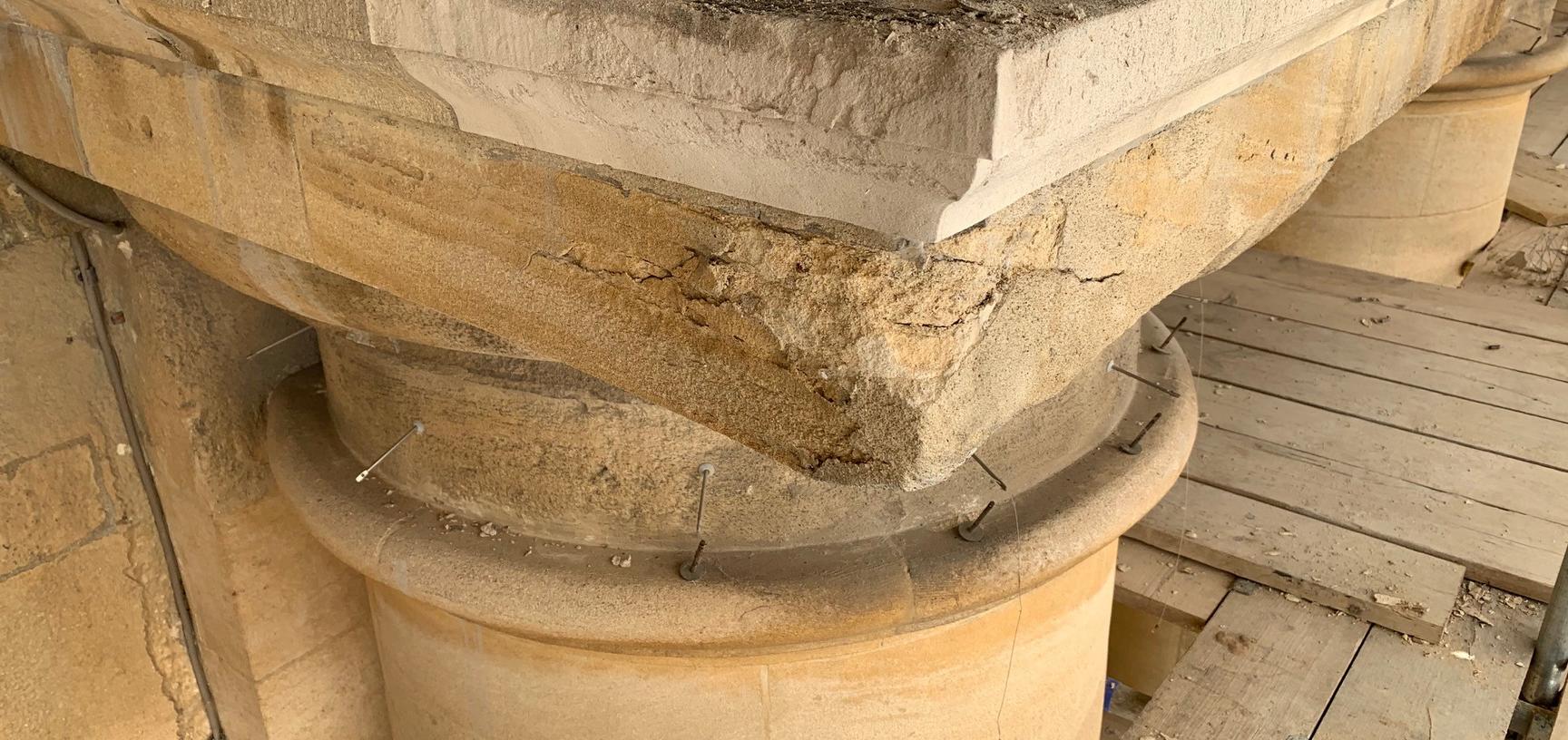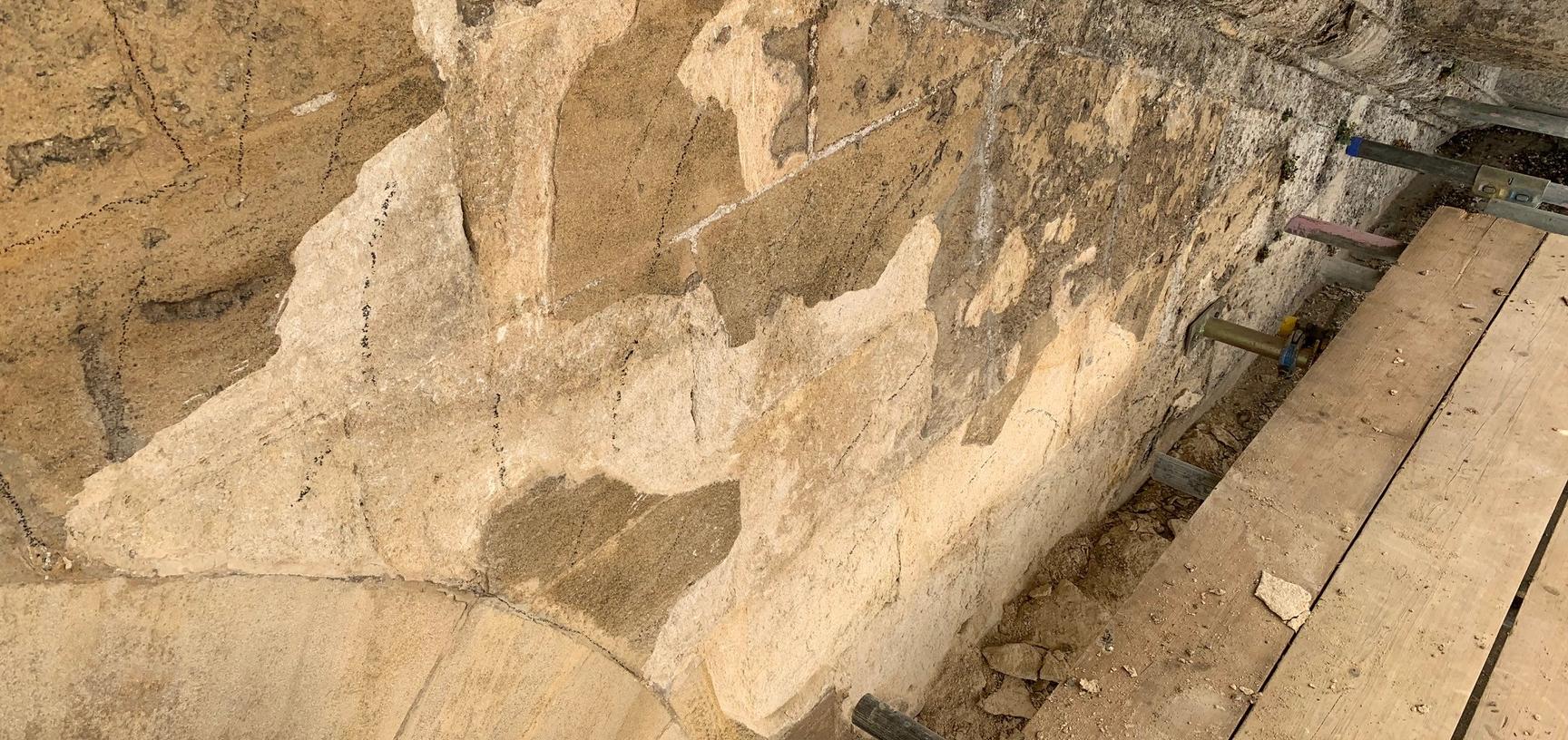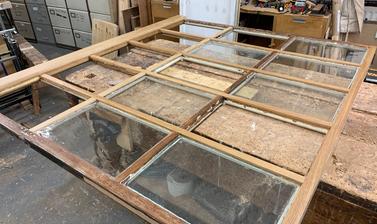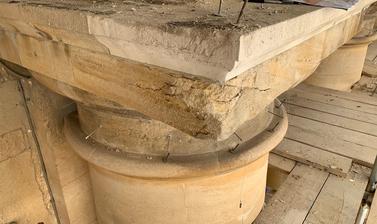First part of Clarendon restoration ending, but work will start again in autumn
The current phase of renovation on the Clarendon building is now coming to an end, but work to restore the building to its former splendour will continue in September
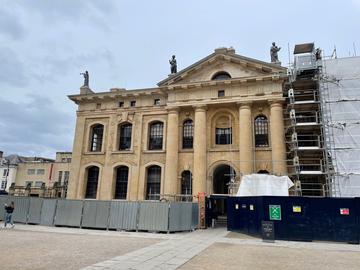
After restoration
Members of the Conservation & Buildings team within Estates Services and contractors have dealt with many problems since starting work last summer, but are now removing the scaffolding around the building ahead of the year’s programme of ceremonial events at the nearby Sheldonian Theatre.
The team have already cleaned much of the building’s stonework, using a combination of steam and chemical poultices to remove pollutants. They have also done a lot of work at high level to replace sections of decayed stone, redress counterproductive earlier efforts at repair and deal with problems they discovered around the gutters and roof, as well as overhauling most of the high-level windows.
More recently, they have been investigating the statues of the nine Muses on top of the building. These have a complicated history, and their current arrangement is some way from what was intended. They were put up in 1717 and seem to be mostly in their original condition. The muse above the central portico (Calliope, the Muse of epic poetry) fell off the building later the same century and was destroyed; another (Melpomene, Muse of tragedy) suffered a similar fate in the 19th century. A third Muse – Thalia, Muse of comedy and pastoral poetry – fell to the ground in 1935, but thankfully, due to technological advances in lead welding, was able to be repaired and reinstated.
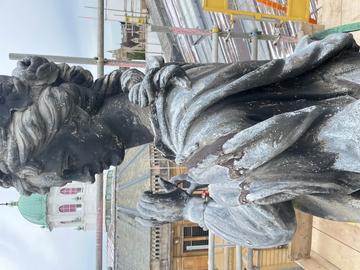
Muse of Music wth flute missing
In the 1970s, the missing Melpomene was replaced with a new fibreglass replica, following donations from the Blackwell family. The University tried to do the same for Calliope, but in an unfortunate case of mistaken identity put up Euterpe, Muse of music, in her place. This means the roof currently features duplicate Euterpes but no Calliope. After fifty years of exposure to the elements, these fibreglass replicas are starting to degrade and need significant intervention.
For the time being the team have made sure the statues are firmly attached to the building to avoid any risk to passers-by over the next few months, but they now want to address these wider problems.
They have submitted a proposal for a follow-on project to remove the statues, undertake conservation works and any required repairs to the original lead muses and replace the fibreglass replicas with newly made lead versions depicting the correct forms, in the process restoring Calliope to her rightful place. New stainless-steel fixings will be added to make sure the statues stay put for centuries to come. The team will also renovate the statue of the Earl of Clarendon that sits in a niche on the west side of the building,
The team are also exploring possible opportunities to display the statues in public, perhaps in the Weston Library, while they are down from the building for conservation.
Many other tasks still need to be done, such as finishing renovation of the stonework on the building’s southern and eastern façades and of its ground floor windows, as well as replacing the railings around the basement light wells with a safer and more architecturally appropriate design.
The project has extended beyond its planned conclusion around the end of last year because the building’s condition turned out to be worse than expected. For example, there were numerous render repairs carried out on the stonework which were all but invisible until closer inspection using the scaffold revealed them to be loose and cracked, necessitating much more stonework replacement than anticipated.
Similarly, most of the windows looked in reasonable condition on the surface, but on closer inspection it became clear that beneath a presentable façade made up of paint layers and short-term repairs, they were badly decayed, ill-fitting and in many cases at the end of their serviceable lives.
The windows have now been stripped back, repaired and refinished by the FM joiners, and any damaged glazing has been replaced. The windows now operate smoothly and shut properly for the first time in many years, and the replacement of draught seals is already helping make the building far more comfortable in cold weather, reducing heating bills and cutting carbon emissions.

